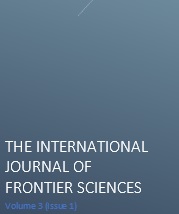Dichromacy: Color Vision Impairment and Consanguinity in Heterogenous Population of Pakistan
DOI:
https://doi.org/10.37978/tijfs.v3i1.47Keywords:
Punjab, Protanopia, Pakistan, Heterogenous Population, Ethnicity, Dichromacy, Deuteranopia, Consanguinity, ChiniotAbstract
Background and Objectives: Dichromacy, an X-linked recessive disorder is identified worldwide, more in males than females. In European Caucasians, its incidence is 8% in males and 0.5% in females. In India, it is 8.73% in males and 1.69% in females, and in Iran, it is 8.18% in males and 0.43% in females. Population based epidemiological data about dichromacy in different ethnic groups in Pakistan is not available. The aim of this study was to find out the population prevalence of inherited red-green dichromacy in a heterogenous population of the district of Chiniot, Punjab, Pakistan, and to determine the impact of consanguinity and ethnicity.
Methods: In this cross-sectional study, boys and girls of the higher secondary schools were examined in the three tehsils of district Chiniot. Pseudoisochromatic Ishihara Test has been employed for detection of dichromacy in the study population. The sample size was calculated statistically as 260, which was expanded to 705 and divided by population density of the three tehsils.
Results: Screening of 359 males and 346 females revealed 19 (5.29%) dichromat males and only 2 (0.58%) females. The study population belonged to 23 castes / isonym groups. The consanguinity found in the district of Chiniot is 84.82% and in the dichromat families, it is 85.71%, of which 52.37% are first cousin.
Interpretation & Conclusion: The study has shown that the incidence of dichromacy could be reduced through genetic counseling
References
Sharpe LT, de Luca E, Hansen T, Jägle H, Gegenfurtner KR. Advantages and disadvantages of human dichromacy. Journal of Vision. 2006;6(3):3-.
Jonnal RS, Rha J, Zhang Y, Cense B, Gao W, Miller DT. In vivo functional imaging of human cone photoreceptors. Opt Express. 2007;15(24):16141-60.
Neitz J, Carroll J, Neitz M. Color vision: Almost reason enough for having eyes. Optics and Photonics News. 2001;12(1):26-33.
Jacobs GH. Evolution of colour vision in mammals. Philosophical Transactions of the Royal Society of London B: Biological Sciences. 2009;364(1531):2957-67.
Koulischer L. X‐Linked Recessive Inheritance. Encyclopedia of Special Education.
Kilborn L, Beh Y. The incidence of colorblindness among the Chinese. Science. 1934;79(2037):34-.
Birch J. Worldwide prevalence of red-green color deficiency. JOSA A. 2012;29(3):313-20.
Ahsana S, Hussain R, Fareed M, Afzal M. Prevalence of red-green color vision defects among Muslim males and females of Manipur, India. Iranian journal of public health. 2013;42(1):16.
Modarres M, Mirsamadi M, Peyman GA. Prevalence of congenital color deficiencies in secondary-school students in Tehran. International ophthalmology. 1996;20(4):221-2.
Karim KJ, Saleem MA. Prevalence of congenital red-green color vision defects among various ethnic groups of students in Erbil City. Jordan Journal of Biological Sciences. 2013;6(3):235-8.
Adam A, Doron D, Modan R. Frequencies of protan and deutan alleles in some Israeli communities and a note on the selection‐relaxation hypothesis. Am J Phys Anthropol. 1967;26(3):297-305.
Niroula D, Saha C. The incidence of color blindness among some school children of Pokhara, Western Nepal. Nepal Med Coll J. 2010;12(1):48-50.
Waaler GH. Über die Erblichkeitsverhältnisse der verschiedenen Arten von angeborener Rotgrünblindheit. Acta Ophthalmol (Copenh). 1927;5(1‐3):309-45.
Oriowo OM, Alotaibi AZ. Colour vision screening among Saudi Arabian children. African Vision and Eye Health. 2008;67(2):56-61.
Mian A, Bhutta A, Mushtaq R. Genetic studies in some ethnic groups of Pakistan (Southern Punjab): Colour blindness, ear lobe attachment and behavioural traits. Anthropol Anz. 1994:17-22.
Mian A, Ali M, Rafique S. Frequencies of colour blindness in different ethnic groups of Quetta (Pakistan). Pakistan J Zool. 1991;23:153-5.
Siddiqui QA, Shaikh SA, Qureshi TZ, Subhan MM. A comparison of red-green color vision deficiency between medical and non-medical students in Pakistan. Saudi medical journal. 2010;31(8):895-9.
Mughal IA, Ali L, Aziz N, Mehmood K, Afzal N. COLOUR VISION DEFICIENCY (CVD) IN MEDICAL STUDENTS. Pak J Physiol. 2013;9(1).
Yousuf W, Moiz Khan B, Kazmi SMR. PREVALENCE OF COLOR-BLINDNESS AMONG PRACTITIONERS OF ESTHETIC DENTISTRY IN KARACHI, PAKISTAN. International Journal of Clinical Dentistry. 2015;8(1).
KHALID M, CHUGHTAI MA, MIAN HI, SHAH SN. FREQUENCY OF COLOUR VISION DEFICIENCY AMONG DENTAL STUDENTS. Pakistan Oral & Dental Journal. 2017;37(1).
Munawar T, Fatima N, Fatima T. FREQUENCY OF COLOR BLINDNESS AMONGST THE YOUNGEST AGE GROUP IN SOUTHERN PUNJAB PROVINCE OF PAKISTAN.
Aslamkhan M, editor Cultural Consanguinity. 3rd International Conference Medical and Community Genetics, Chandigarh, India; 2008.
Aslamkhan M. Primary Prevention of Disability. Mother and Child. 1983;20(1):09-14.
Muhammad Aslamkhan; Ali M; and Barnett H. Consanguineous marriages in Rural West Pakistan. Ann Rep Uni Md Sch Med ICMRT.
Downloads
Published
Issue
Section
License
Copyright (c) 2019 The International Journal of Frontier Sciences

This work is licensed under a Creative Commons Attribution 4.0 International License.






